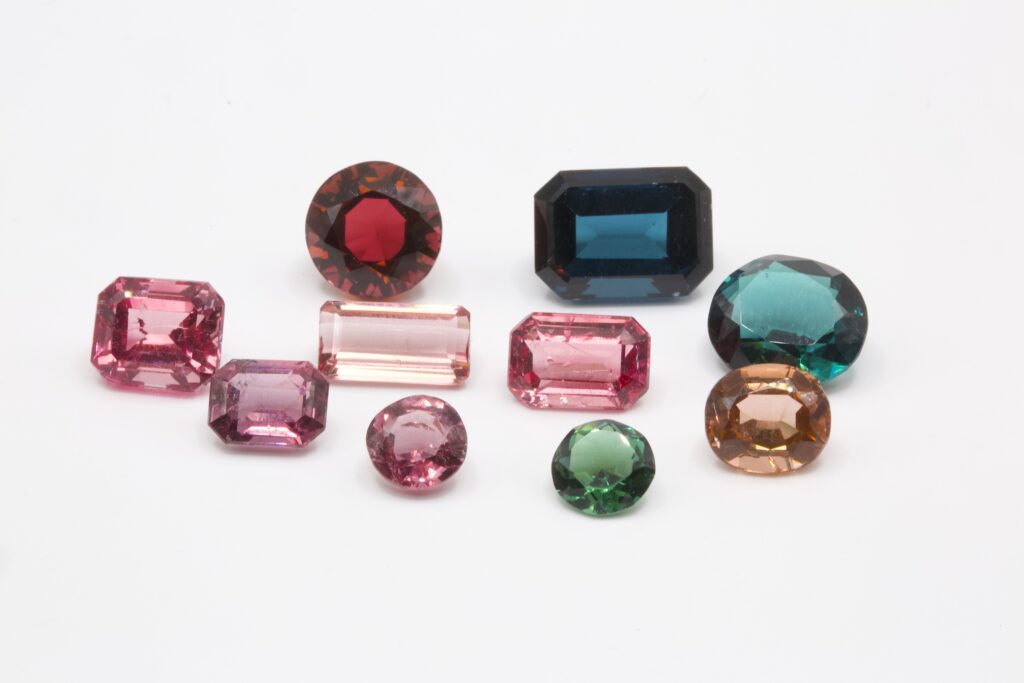
Colour is one of the most appealing features of gemstones and is often the main reason why they are valued. However, it is also true to say that some mineral colours are rarer and more prized than others. Here, Gem-A Gemmology Tutor Pat Daly explores the nuanced world of colour in gemstones, including brilliant reds, Kashmir sapphires, colour change alexandrite and more.
What Causes Colour in Gemstones?
Our perception of colour depends on the modification of white light by a gemstone, and an eye capable of seeing in colour to appreciate the result. Eyes are not all the same, even among people, and colour perceptions differ. There is general agreement, however, about what constitutes the most desirable colours in gems, though individual tastes vary. Colour in most gemstones is produced by the selective absorption of the spectral colours in white light by electrons in their atomic structures. The body colours of gemstones, such as the red of ruby and the green of emerald, result from this interaction. In other stones, thin layers of one material in another, such as those in labradorite, or nanometre-scale regular structures found in opal, cause bright iridescence.
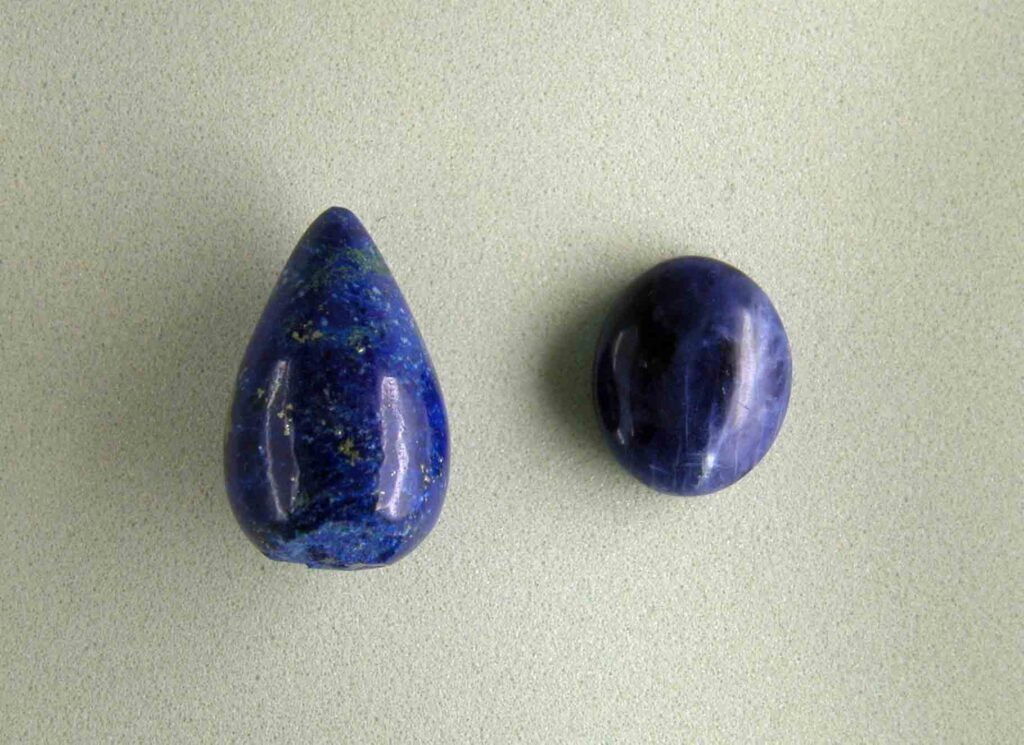
In a few stones, colour must stand by itself. Fine turquoise and lapis lazuli, for example, are lovely blue stones which depend entirely on colour for their beauty. In most stones, however, colour is enhanced by transparency or translucency, which provides depth and brilliance. Some gem species, such as corundum, beryl and tourmaline, may have any body colour. Others are known for only one or two. Examples are orange spessartine garnets, green peridot and blue iolite. Although hues (red, green, etc.) may be common in several gem species, the most desirable colours tend to be more restricted.
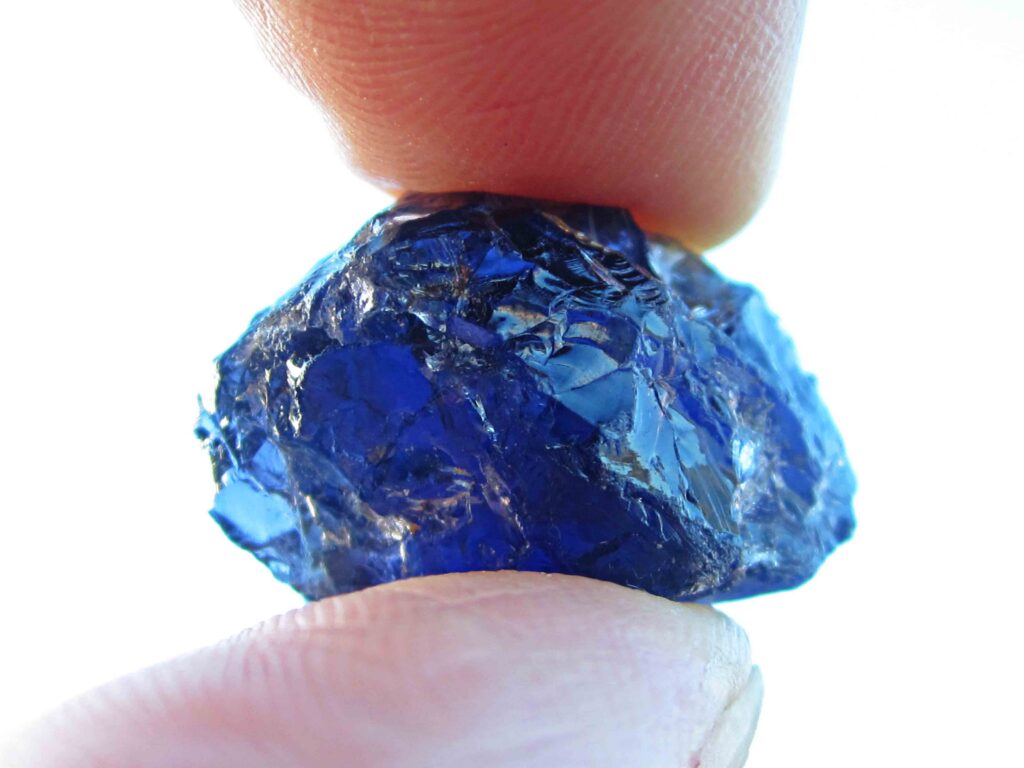
The Most Prized Colours in Gemstones
The most brilliant reds are seen in the finest rubies and red spinels, because their colour is caused by more than selective absorption. It is made brighter by fluorescence; the conversion of the ultraviolet component of daylight, and of violet and blue light to red by some of the electrons in the stones. This extra contribution in the best of these stones produces an unrivalled vivid red.
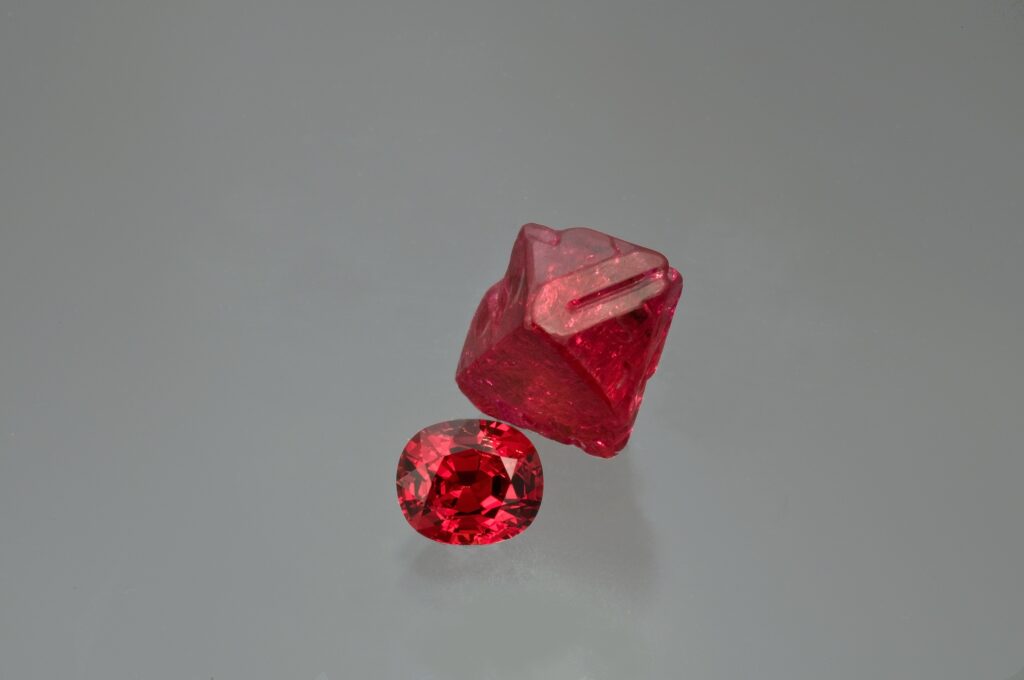
Most people would award Kashmir sapphire the prize for the best blue gemstone. These beautiful, slightly sleepy-looking stones have been appreciated since they were first found in the late 19th century. The mines were mostly exhausted within about 10 years, and their desirability, combined with their increasing scarcity relative to the expansion of the potential market for them, has kept them amongst the most coveted of coloured stones. Sapphires from other localities, especially Madagascar, may rival these stones, but the finest of those from Kashmir are reckoned to be the most desirable.

The Importance of Chromium in Gemstone Colour
The brilliant reds of ruby and spinel are caused by one or two per cent of chromium, which replaces some of the essential aluminium of these gems. Chromium may also produce a bright green colour, as it does in several gem varieties, including tourmaline and demantoid garnet. Two gemstones may contend for the most valued bright green stone coloured by this element. Emerald immediately springs to mind, but jadeite is also a lovely, rich green. Fine examples of these stones are rare and very expensive.
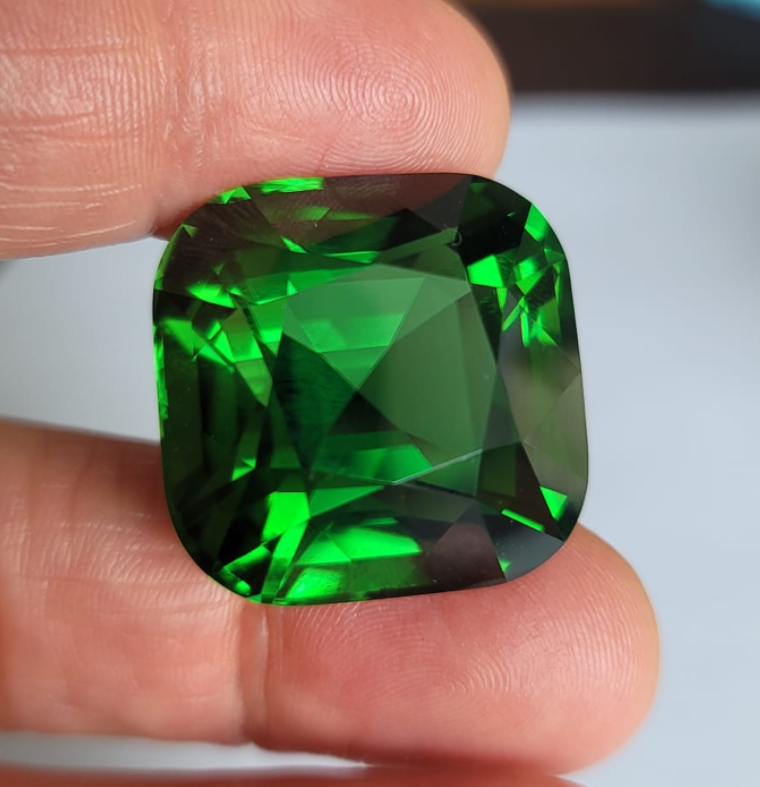
Chromium is also responsible for the colour change in alexandrite, between red and green, depending on whether it is viewed in incandescent illumination or daylight. Although neither colour is as bright as those of ruby and emerald, the colour change has intrigued buyers since this variety of chrysoberyl was discovered.
Understanding Rare Tenebrescence
Another rare effect is tenebrescence. This means that a stone changes or increases the intensity of its colour when it is exposed to ultraviolet. Several such materials are known, but the most dramatic is a variety of sodalite. This stone, which is called hackmanite, may change from light pinkish to deep purple. Light causes colour to fade, while ultraviolet darkens it. However, some stones become darker more quickly than they fade. The best examples, which may be cut as cabochons or faceted stones, can be watched as they darken when held in sunlight.
Variety of Colour in Popular Gemstones
Diamonds are famous for the absence of body colour, and white stones are highly desirable. It is possible, however, to find diamonds of any colour, although fine examples are very rare. Bright yellow, green, blue and pink diamonds are all scarce, but the rarest colours are red and purple, few of which are seen in the jewellery trade. Just this year, a red diamond, the Argyle Phoenix, weighing 1.52 carats, was sold at auction for $4.2 million.

Tourmaline, by contrast, is well known for the variety of colours in which it may be found. Beautiful examples of most colours are available, sometimes in striking combinations. Emerald cut stones, which are parti-coloured, so that half is green and the other pink, for example, are among the most interesting natural materials.
In the late 1980s, this gem species, which already supplied many unusual varieties, surprised the gem trade when stones coloured by copper were found. Named Paraiba tourmalines, these bright green and blue stones captured the imagination of jewellery buyers and rapidly rose in value. They were found in a mine in the state of Paraíba in Brazil. Subsequently, the same type of tourmaline has been found in a neighbouring state, and in Nigeria and Mozambique. All of them are properly called Paraiba tourmalines, but this variety remains rare and valuable.

All the stones mentioned so far display body colour. The body colours of most opals are white to black, but fine, regular structures in precious opals produce rainbow hues. These are seen in all combinations and an almost endless variety of patterns, to form astonishing displays of vibrant colours.
Other Things to Consider
There are good reasons why the materials listed above are the best-known and most popular gemstones. Apart from opal, which stands alone in its properties and beauty, most combine hardness, toughness and often transparency with their vibrant colours. A consideration of the range of stones available in the gem trade reveals many more varieties with rare and gorgeous colours. Bright green tsavorite garnets and the blend of pink and orange that is seen in padparadscha sapphires are examples. Others may be obtained for a small fraction of the cost of the more famous gems, although they may be less durable. A brief list includes the rich purple of amethyst, the blue of fine kyanite, which resembles sapphire, the blue to green apatites, which bear comparison with the colours of Paraiba tourmaline and many others can be added.
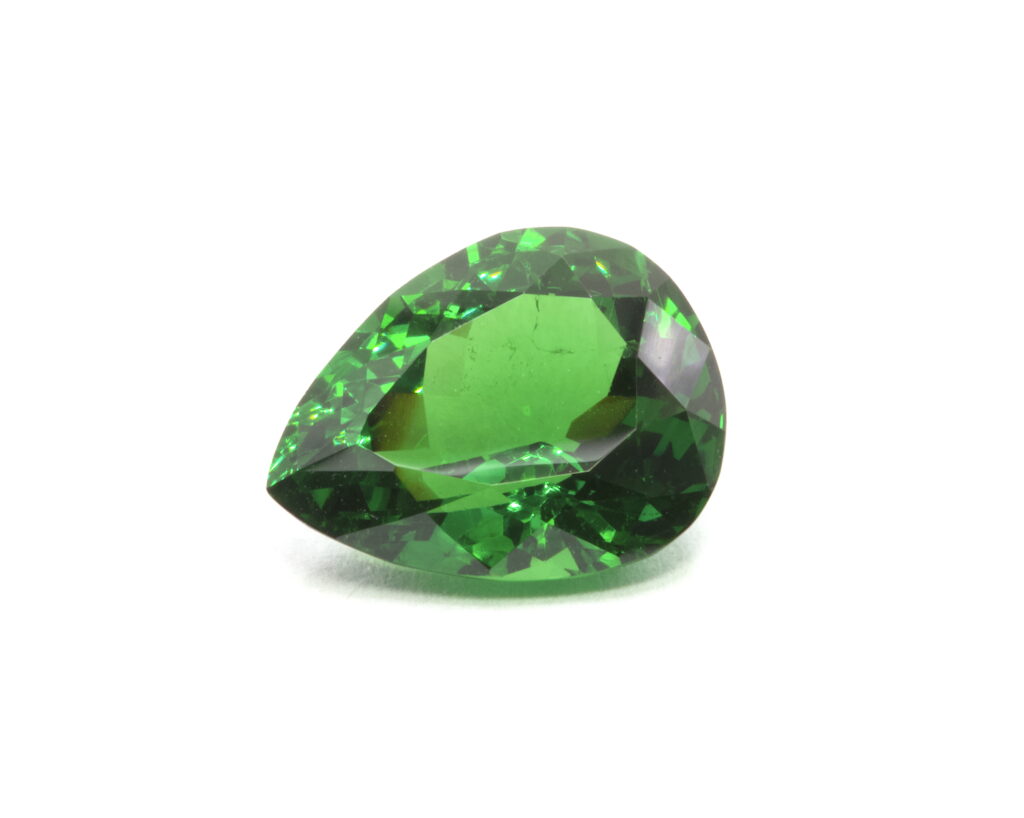
The rarest colours of gemstones are the brightest and most vivid ones seen in those of the best quality. For example, there are many blue sapphires in the world, but few approach the colour of the finest Kashmir stones. The same may be said about all the colours of the rainbow and all gem species. Fortunately for most of us, beauty and desirability are not confined to the finest gems, and we are satisfied with the wide choice of good quality gem materials which are available to us, whose appearance can be improved by careful fashioning and by framing them in well-designed jewellery.
Main image: A group of cut and polished tourmaline gemstones in a range of colours, photographed by Gabriel Kleinberg.
…………………………………………………………………………………………………..
If you would like to learn more about Gemmology, you can sign up for our short online course GemIntro or explore our accredited programmes.


